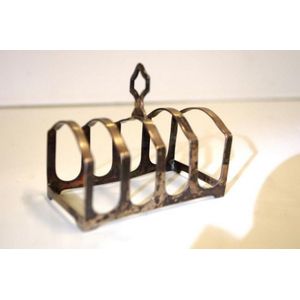Sheraton Mahogany Dining Chairs (Set of 15)
A set of seven George III Sheraton design mahogany dining chairs together with eight later chairs, the oval back with bell flower, shell and bird inlay, pierced splats above over-stuffed seats and raised on square tapering legs joined by an H-stretcher, seven period 18th century and eight 20th century copies (15)
You must be a subscriber, and be logged in to view price and dealer details.
Subscribe Now to view actual auction price for this item
When you subscribe, you have the option of setting the currency in which to display prices to $Au, $US, $NZ or Stg.
This item has been sold, and the description, image and price are for reference purposes only.
- Over Upholstered Seat - In the mid 19th century coiled upholstery springs came into use and frame of the chair was used as the upholstery frame, making for a much more comfortable and responsive seat. The springs were held in place by webbing and were covered with horse hair, coconut fibre or seaweed with the edges stiched so they were more defined.
This type of seat was known as an over-upholstered or over-stuffed seat
Prior to this, a drop in (or "drop on") seat was commonly used. This was an unsprung removable seat where the upholstery was attached to a wooden frame, which was held in place by the sides of the chair, and usually a wooden peg at the front of the chair. Because the upholstery frame was not very deep, the seats were relatively uncomfortable. - Pierced Decoration - Ornamental woodwork with part of the background cut through and removed to produce an open-work pattern.
- Thomas Sheraton - Thomas Sheraton (1751-1806) was born in Stockton on Tees in the north of England. He was apprenticed to a local cabinetmaker and after working as a cabinetmaker, Sheraton moved to London about 1790. Although he described himself as a cabinet-maker, like Chippendale, no definite piece of furniture can be traced to him as maker. Nevertheless, he was immensely influential and in 1791-4 published his four volume book 'The Cabinet-Maker and Upholsterer's Drawing Book'. The books were used as source of design by the furniture-making trade , who often simplified or modified the designs to suit their own preferences. Sheraton furniture is marked by restraint and sophistication, elegance and discretion, though he also found time to invent fanciful combination furniture.
- George Iii - George III (1738 - 1820) was King of Great Britain and Ireland from 1760 to 1820.
- Inlay - Decorative patterns inserted into the main body of a piece of furniture, generally in wood of contrasting colour and grain, though brass, ivory, ebony, shell and sometimes horn have been used. Inlay may consist of a panel of well figured timber inset into a cabinet door front, geometric patterns, or complex and stylized designs of flowers, swags of foliage, fruits and other motifs. As a general rule, in pieces where the carcase is constructed in the solid, the inlay is relatively simple such as stringing, cross banding and herringbone banding. Where more elaborate and decorative work was required veneer was used. Inlay has been fashionable from at least the latter half of the 17th century, when a variety of elaborate forms were developed
- Mahogany - Mahogany is a dense, close grained red-coloured timber from the West Indies and Central America. It was first imported into Europe in the the early 18th century and its use continued through the 19th century. It was popular for furniture making because of its strength, the wide boards available, the distinctive grain on some boards, termed flame mahogany and the rich warm colour of the timber when it was polished.. The "flame" was produced where a limb grew out from the trunk of the tree, and this timber was usually sliced into veneers for feature panels on doors, backs and cornices.
Some terms used to describe mahogany relate to the country from which it originally came, such as "Cuban" mahogany, "Honduras" mahogany etc. However unless the wood has been tested the names assigned are more a selling feature, rather than a true indication of the timber's origin. - Parquetry - Parquetry is inlay laid in geometric patterns, the contrast being achieved by the opposing angles of the grain and veneers. The herringbone pattern is the most commonly used in flooring, but this is almost never seen in furniture - the patterns used are more complex and unlike flooring, can include several different varieties of timber.
This item has been included into following indexes:
Visually similar items

A cast iron garden arbour and gate, French, circa 1900, 244 cm high, 242 cm width of arbour, 47 cm deep
Sold by
in
for
You can display prices in $Au, $US, $NZ or Stg.

Vintage Australian silver toast rack 8 cm wide
Sold by
in
for
You can display prices in $Au, $US, $NZ or Stg.

A small four-slice silver toast rack, with central handle. Birmingham 1935. 115gms. Length 9 cm
Sold by
in
for
You can display prices in $Au, $US, $NZ or Stg.

Set of eight Regency period mahogany dining chairs with carved ribbon swag splats, circa 1830, ivory coloured leather requires rejuvenation
Sold by
in
for
You can display prices in $Au, $US, $NZ or Stg.
